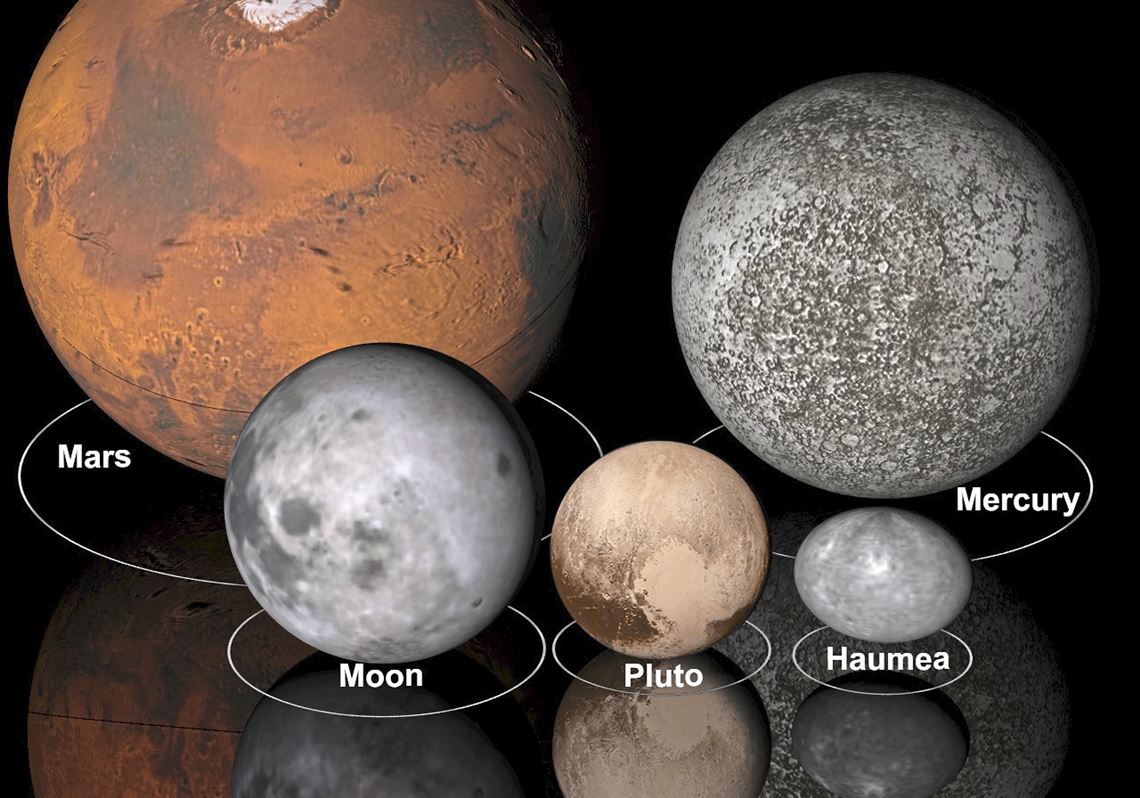On Thursday, Dec. 30, Mercury and Pluto will be visible within the same telescopic view. The pair will be highest in the sky during the daytime in the constellation Sagittarius. Although not observable from Pittsburgh, this conjunction brings notable comparisons.
Mercury, the closest planet to the sun, completes its orbit in 88 days. Pluto takes 248 years to orbit the sun. Mercury is twice as big as Pluto, although only a little bigger than our moon. It even looks a little like our moon, cratered and rocky, with no moons of its own. Pluto is a tiny icy world with five orbiting moons.
The biggest difference is not only Mercury’s discernibility with the unaided eye, but that Mercury is a planet. It’s the only object of its kind in that part of the solar system, which is one of the definitions of a planet. Pluto is part of the large grouping of frozen worlds known as the Kuiper Belt. When Clyde Tombaugh discovered Pluto in 1930, it appeared to be in its own planetary class and was labeled that way. As telescopes grew stronger, more Pluto-like objects were revealed. The breakthrough discoveries categorized Pluto as the archetype of its surrounding population. Significantly, it redefined our solar system classifications. To honor Clyde, Pluto’s heart shaped feature is unofficially acknowledged as Tombaugh Regio.
First Published: December 28, 2021, 5:00 a.m.














